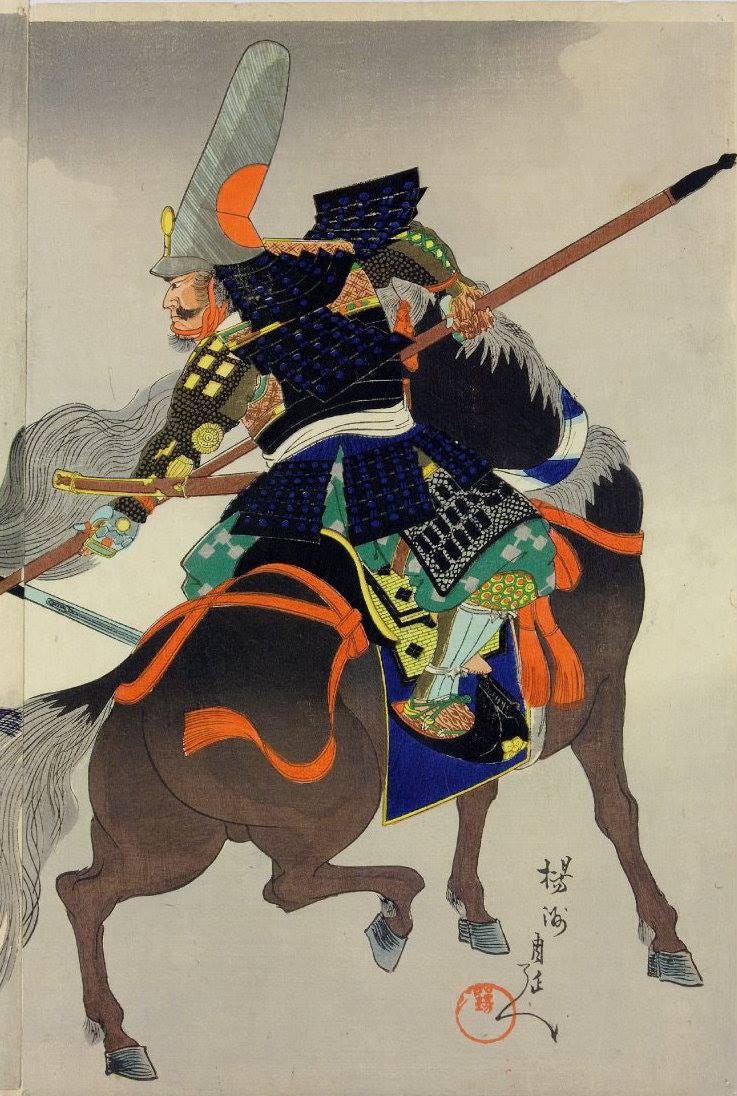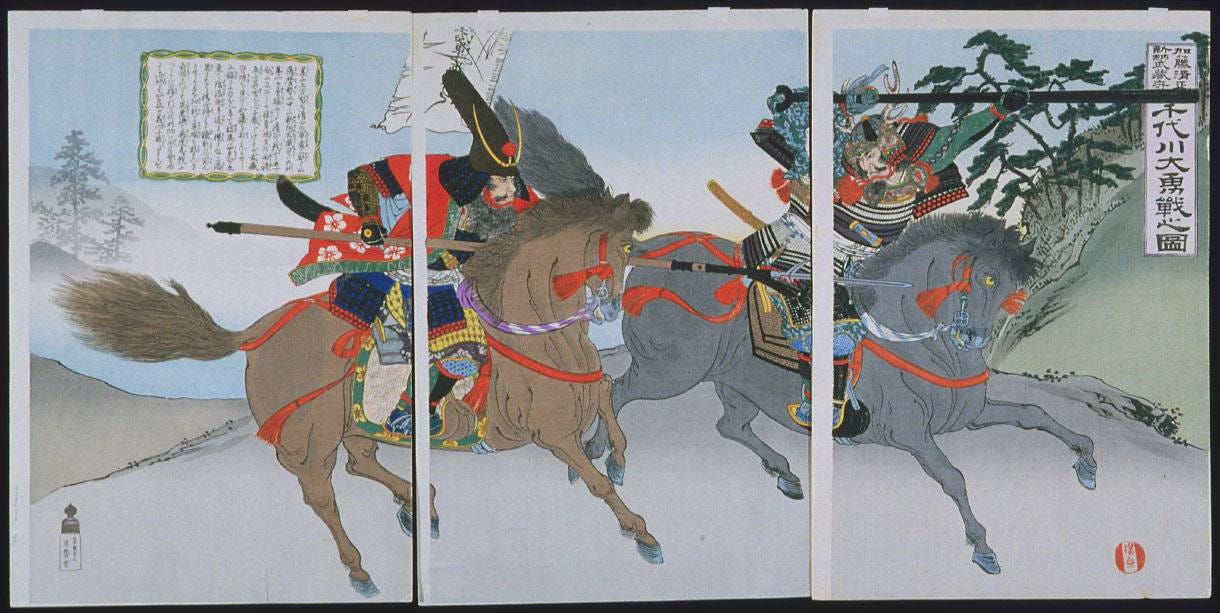There’s a story in the Edo period penned “Biography of Kiyomasa Kato” that tells of the time Kato Kiyomasa is said to have visited Lord Ishikawa (Gemba) Yasunaga, (the son of Ishikawa Kazumasa, famed for having long been a close confidante of Tokugawa Ieyasu, only to inexplicably turn and join the rival warlord Toyotomi Hideyoshi in 1585) on the completion of Yasunaga’s fine Matsumoto Castle keep.
After his short stay at Matsumoto, and just before Kiyomasa was about to return home, the horse loving Yasunaga offered to present him with one of two fine horses. Kiyomasa looked at the two native Kiso uma steeds before him, and is quoted as having said, “How can I pick between two horses that a well-known connoisseur like you have chosen for me?” and with that, he took both horses with him.
When the story got around, people were impressed with Kiyomasa’s decision. The horse he had not chosen would have become a dray horse. Had he chosen the inferior horse, people would have laughed at him for not having the skills to judge horses. By taking both of the horses with him, Kiyomasa avoided any troubles. A wonderful tale indeed, but whether this story is true or not remains to be decided.
Kiyomasa — ever the warrior — built not only one of Japan’s finest castles at Kumamoto, but also established five large horse breeding farms in the Aso region of Kumamoto to provide battle steeds for his armies. Many of the descendants of the horses he bred were taken to Korea to serve Hideyoshi’s army there. Nearly 350 years later, more of those fine horses were taken by the Japanese Imperial Army to Manchuria (China) for their troops as they crossed the continent. As the horses were abandoned on Japan’s defeat, they were left there, thus not only depleting stocks in Japan, but as only the best, strongest horses had been taken, the breeding stock too was greatly weakened, and according to experts, never really recovered.
Incidentally, the mostly Kyushu based custom of eating horse meat is said to have been introduced by Kiyomasa, who was apparently forced to consume horses during his entrapment during a prolonged siege while fighting on the Korean Peninsula. However, this story is false. A strict Nichiren Buddhist, Kiyomasa would have refrained from eating the meat of a four-legged animal. In fact, horse meat was introduced as a delicacy in the 1960’s, when Kumamoto Prefecture had an over abundance of horses. As Japan was fast modernising, with motorised farming equipment, horses were no longer required, and so horse meat was marketed as “basashi”, and the legend of Kiyomasa and his samurai eating horses evolved as a marketing ploy. The popularity caught on, thus saving the Kumamoto horse raising industry.






